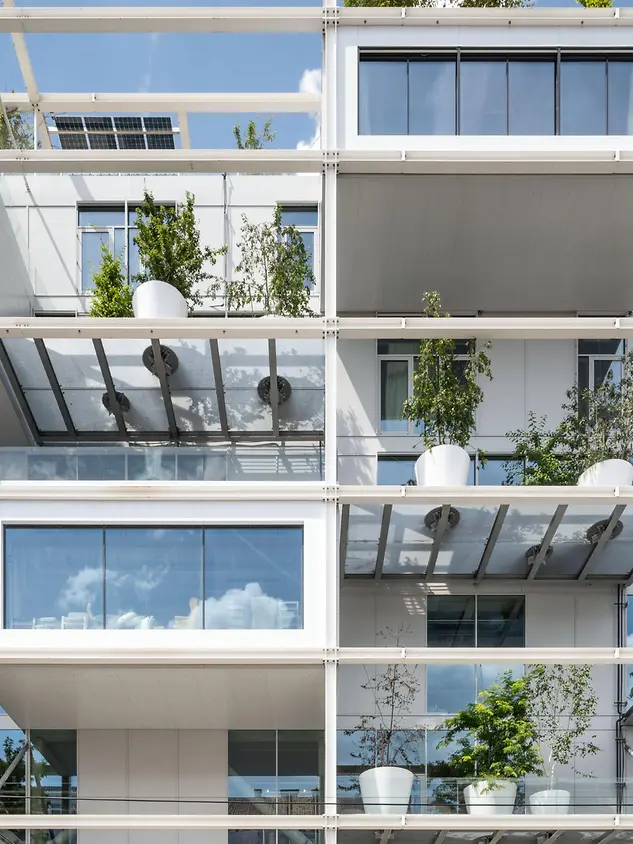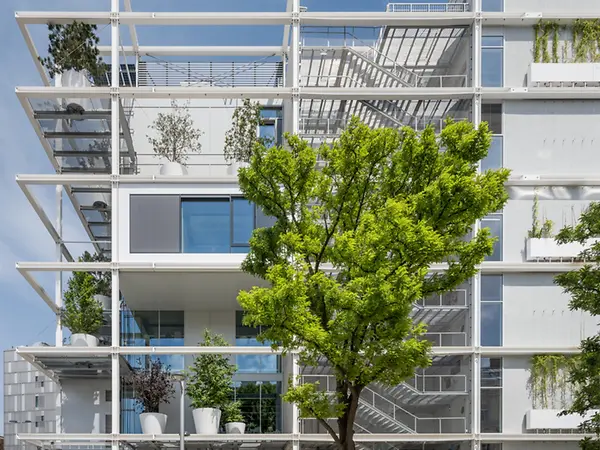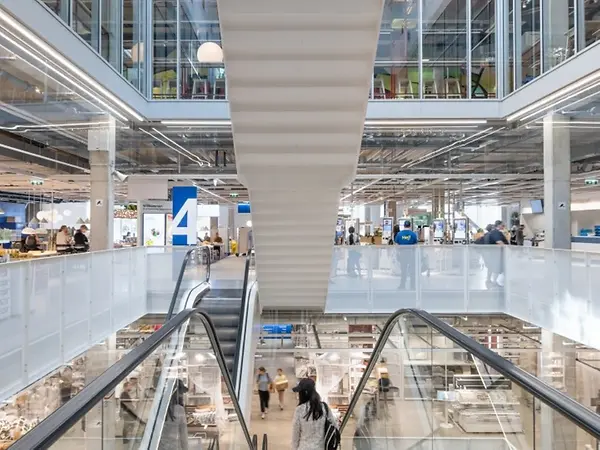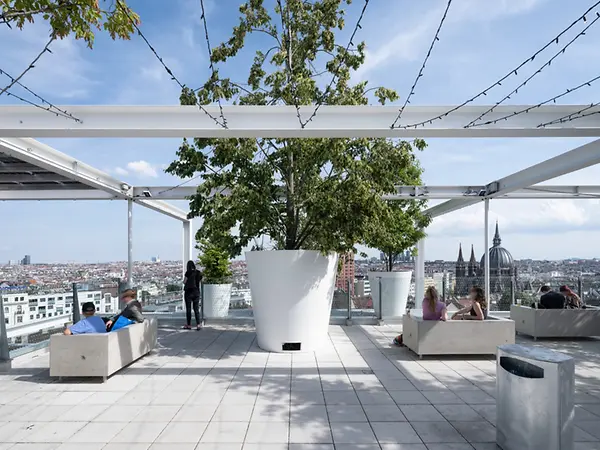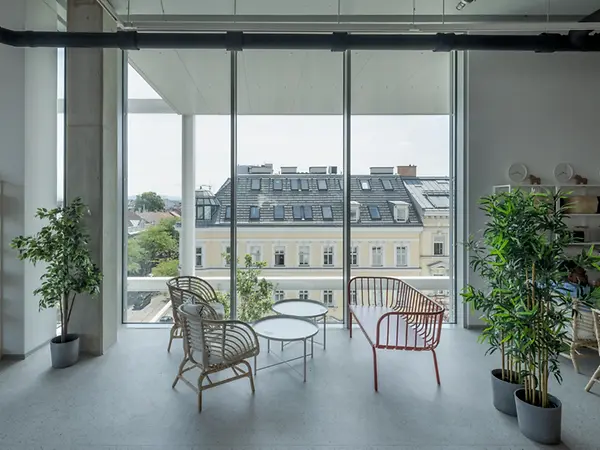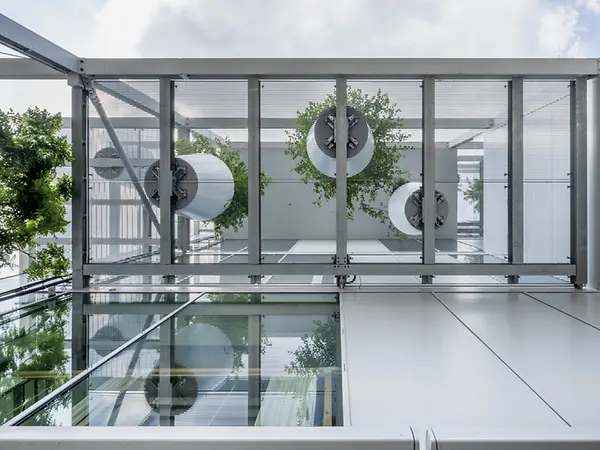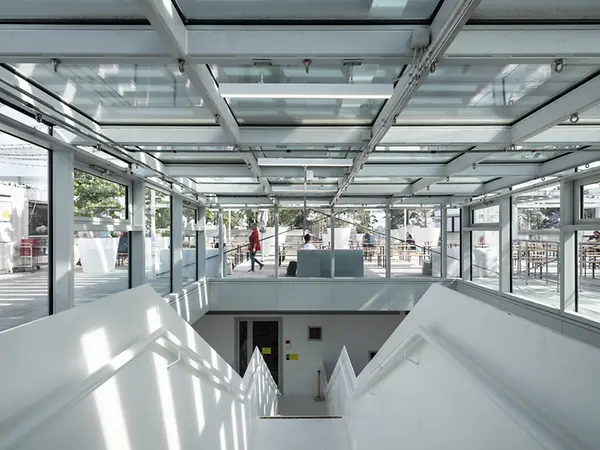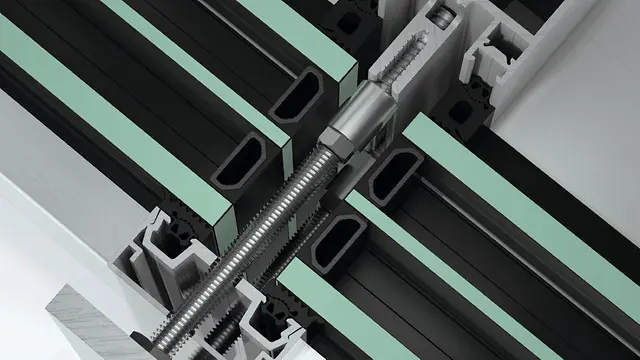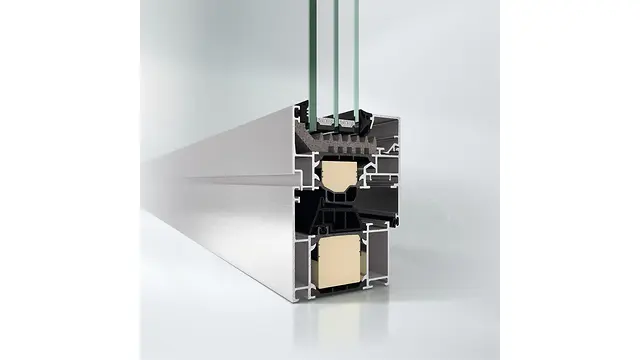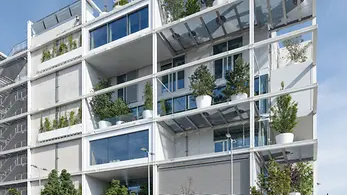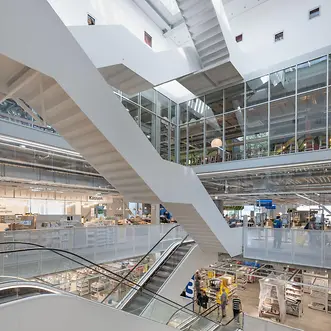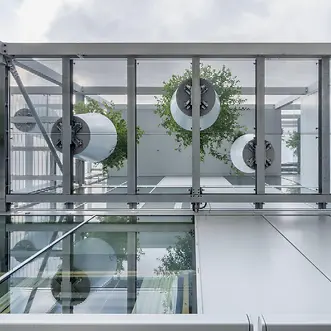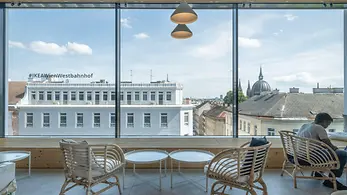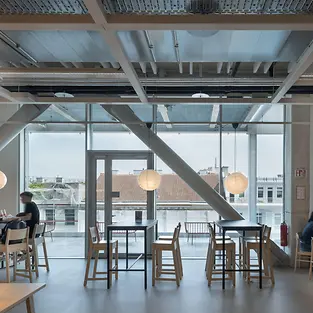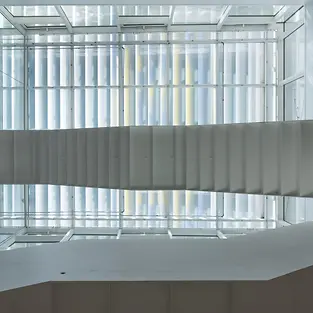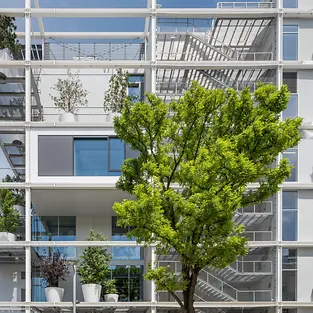In the hostel, the architects combined effective fire protection with maximum transparency. A storey-height, steel Jansen VISS Fire TVS EI60 mullion/transom façade provides 60 minutes of fire resistance all around the atrium. Steel Janisol 2 EI30 and Janisol C4 EI60 fire doors are integrated here. One storey higher, closed white walls predominantly surround the atrium. Only a few individual Schüco ADS 80 FR 60 fixed fire-resistant glazing units provide views from the hostel into the large air space.
While the approximately 50 m deep building floor plans were advantageous for the furniture store, they proved challenging for the operation of the hostel. In order to provide the interior spaces with enough light, the architects added two new two-storey inner courtyards and a further three-storey inner courtyard on the 5th and 6th floors in addition to the large atrium which spans all of the floors. The courtyards are also surrounded by Schüco FWS 50.SI mullion/transom façades – although here these have a fire protection function in some areas to prevent the spread of fire through the inner courtyards.
The glass roof above the atrium did not require any fire resistance. It is, however, extremely important for removing smoke from the building. For this, the architects chose the Schüco AOC 50 ST add-on system on a substructure made from rectangular steel tubes. Two opening vents are integrated in the system for smoke and heat exhaust ventilation, which open automatically in the event of a fire.
